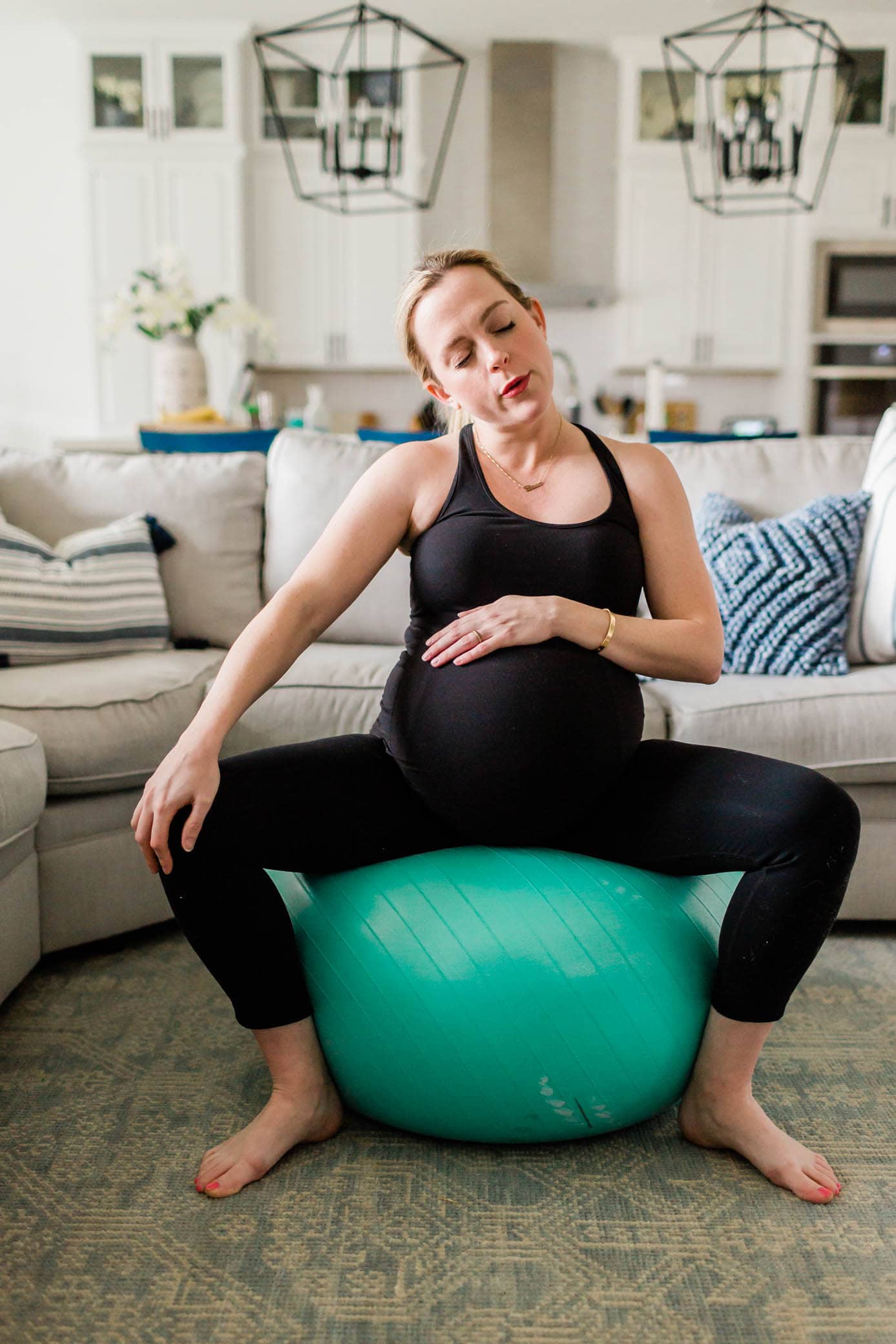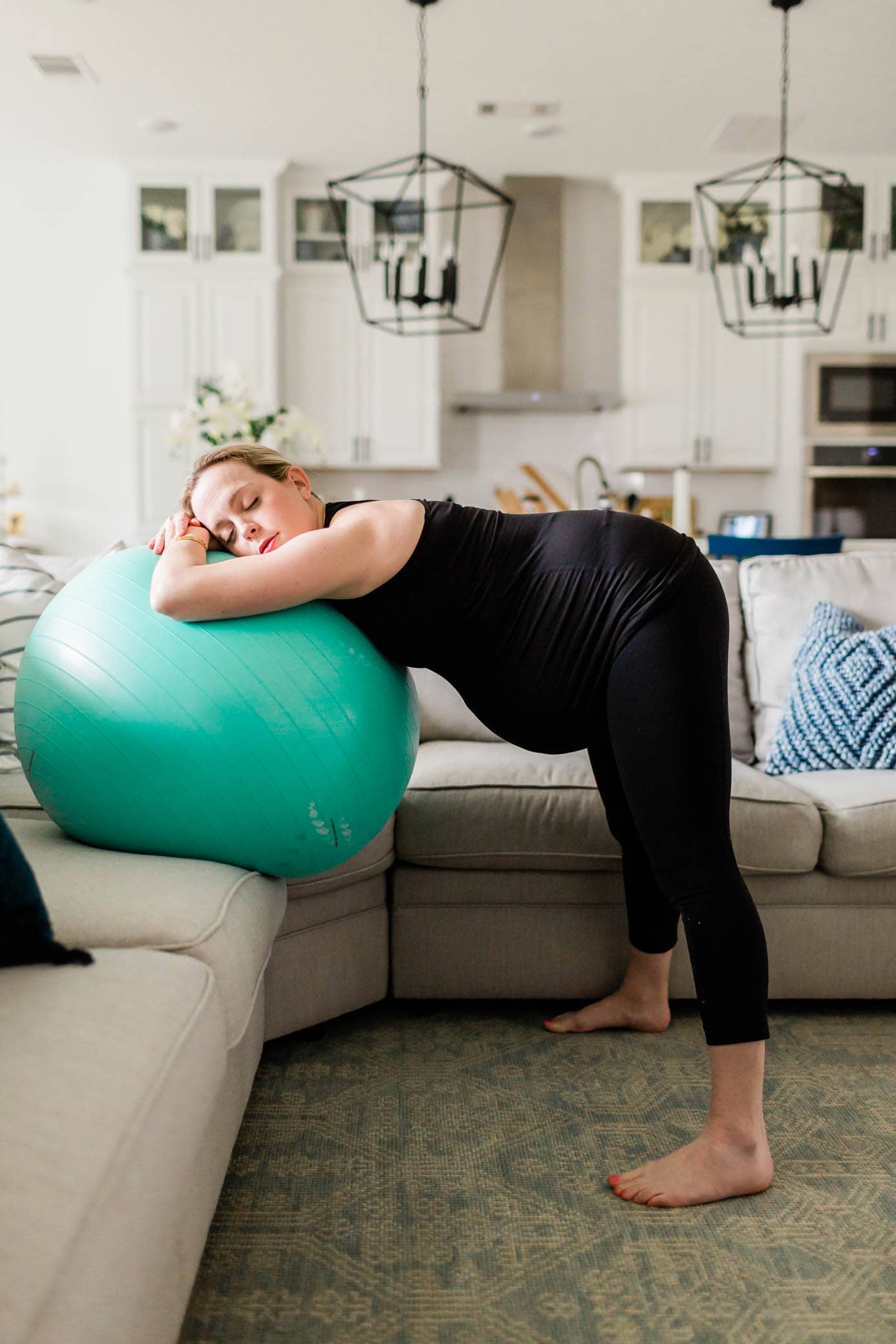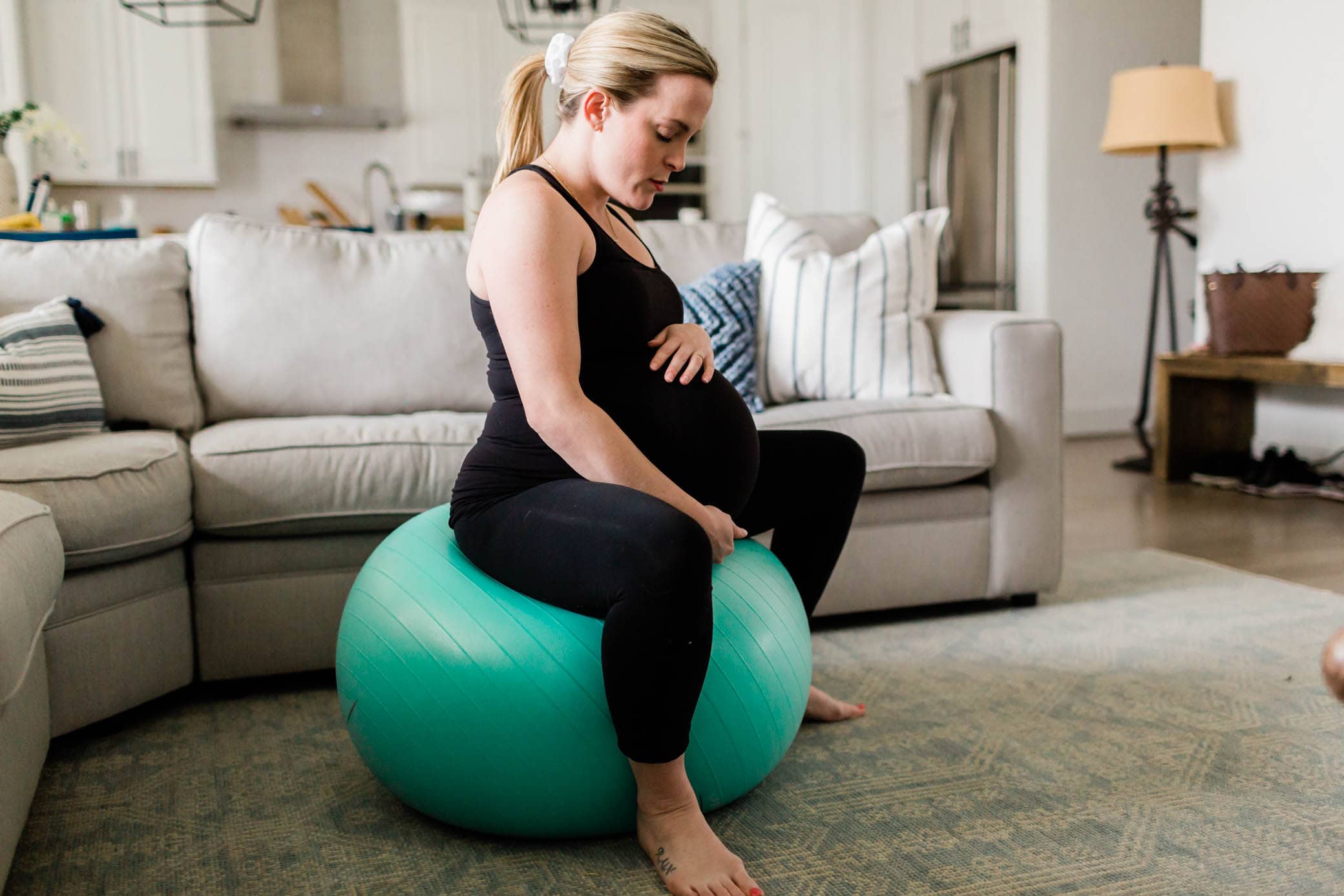Pregnancy is an exciting but challenging time, especially during labor. The pain and discomfort of labor can be overwhelming. Many women seek natural ways to ease the process, and one such method is using a birthing ball during labor. You can also use a birthing ball during pregnancy and after your baby is born to help with discomforts such as back and pelvic pain.
This article will explore what a birthing ball is, how to choose the correct size, and how to use it during labor. You will also discover some birthing ball exercises and positions. Hopefully, the birthing ball can be a tool that you will find helpful to relieve the aches and pains of pregnancy and help support normal labor. Let’s bounce right into what it’s all about.
What is a Birthing Ball?
A birthing ball, also known as an exercise ball, yoga ball, or stability ball, is a large, inflatable ball made of PVC. It ranges in size from 55 cm to 75 cm. Initially used for fitness and rehabilitation, the birthing ball is widely used during pregnancy and labor. Mothers can use the birthing ball for exercises, relaxation, and pain relief by leaning or sitting on it.1
There is a variation of the birthing ball called a peanut ball. It is peanut-shaped and used by women that need to remain in bed, for example, when they have an epidural. We will focus here on the traditional birthing ball.2
Benefits of Using a Birthing Ball

There are many benefits to using a birthing ball during pregnancy, labor, and after delivery. Some of the most important benefits include:3,5,6,7,8,10
- Decreasing labor pain
- Helping prepare the cervix for labor
- Increasing the chance of a vaginal delivery
- Decreasing anxiety
- Improving posture and balance
- Relieving spinal and back pain
- Helping to get your baby in the correct position
- Possibly shorten labor
- No increased risk of complications
How to Choose a Birthing Ball
Birthing balls come in several sizes. Having the right size will help you to be safe and comfortable. As a general guide, the proper positioning for sitting on the ball is to have your feet flat on the floor. If you’re on your toes, the ball is too big; if your knees are higher than your stomach, it’s too small. Refer to the product information for different sizing. Select a ball based on your height. Typically, these sizes work:8
- 55 cm ball – If you are under 5 ft 4 in
- 65 cm ball – If you are around 5 ft 8 in
- 75 cm ball – If you are taller than 5 ft 8 in
Once you have selected the right size, it’s time to prepare your ball for use. Inflate the ball and ensure it’s firm enough to support your weight. You can add extra air as needed.
Remember to Be Safe
It’s essential to know how to use a birthing ball safely. Be mindful of your balance when sitting on the ball. At first, it’s a good idea to use your ball with the help of a support person. Get comfortable sitting on the ball before you try to move or do exercises.11
Using your ball on a carpeted floor or non-slip mat will make you more stable. Use non-slip shoes or socks or bare feet. Place your feet far apart on the floor for stability. If your water breaks while using the ball (excellent, you’re progressing!), place a towel on the ball to absorb the fluid.
Using a birthing ball is safe, but if you have any concerns, please ask your doctor, midwife, or labor and delivery nurse.
How to Use a Birthing Ball During Pregnancy
You can use a birthing ball at any time during pregnancy. Many women find it more comfortable than a chair or couch. A birthing ball is beneficial, starting around 32 weeks, to help get your baby in the correct position and to help with aches and pains. I recommend exercising for at least 20 minutes three times a week.
You can do many birthing ball exercises, including:8
- Sit and straddle the ball. You can gently bounce.
- Sit and rock your pelvis forward and backward without moving your shoulders.
- Sit and rock your pelvis from left to right without moving your shoulders.
- Sit and rotate your hips in circles clockwise, then counterclockwise.
- Kneel on all fours while hugging the ball and rocking your pelvis.
- Stand in front of the ball with your feet shoulder-width apart. Place your hands on the ball and lower yourself into a squatting position, keeping your knees over your ankles.
How to Use a Birthing Ball to Induce Labor
If your baby is due, or you have passed your due date, you may wonder if the birthing ball can help get you into labor. There isn’t any clear evidence as to whether birthing ball exercises can help to induce labor naturally, but they may help.1
A birthing ball can help by encouraging your baby’s head to get in the correct position and move down into your pelvis and onto your cervix. If your baby’s head is on the cervix, hormones that stimulate labor are released. If your body is getting prepared for labor, this may help. But remember, no exercise will induce labor if your body isn’t ready.1,6
Try sitting with your knees wide open and rotating your hips in circles. Do this for 20 minutes, changing directions every few minutes. You can also gently bounce on your birthing ball.
How to Use the Ball During Labor

Many labor and delivery units have ones you can use in labor if you do not have your own. Check with the facility where you plan to deliver. But you will probably be most comfortable using the one you have been using during pregnancy, so bring it along.
Even if you plan on getting an epidural, a birthing ball is helpful during the early part of labor when you may be encouraged to walk and move around.
You can continue doing the same exercises you did during pregnancy while in labor. In addition, here are some different positions to try during labor to promote comfort and relaxation and to help open your pelvis:11
- Sit on the ball with your feet on the floor. You can rock side to side or forward and backward.
- Lean over the ball from a kneeling position. This is also a good position for pushing.
- Lean over the ball from a standing position with the ball placed on something higher such as a bed.
- Hug the ball and lift your bottom from a kneeling position. Then, rock your pelvis from side to side.
- Sit on the ball and lean forward onto a pillow on a bed. This resting position is a great place to get a back rub from your support person (hint!).
- Use your ball in the shower. Water gives you an added tool to help with relaxation and pain relief.
Using the Ball After Delivery
Using a birthing ball after delivery can help relieve discomforts such as vaginal pressure and back pain. It is often more comfortable to sit on than a chair, especially if you have painful stitches or hemorrhoids. Deflate the ball a little to make it softer to sit on.
The birthing ball can also be an excellent tool for comforting a fussy baby. I recommend waiting until your baby is 2-3 weeks old before using your ball with your baby. Also, be sure you are comfortable getting on and off your ball before adding your baby to the process. A second pair of hands may be helpful. Rock back and forth to soothe your baby. It’s a great option when your legs get tired.
Birthing balls are a fantastic tool during pregnancy, labor, and after birth. During pregnancy, exercises can help tone your muscles, help with balance, promote relaxation, and help to get your baby into your pelvis correctly. Using the ball in different positions during labor can decrease pain and anxiety and help labor progress. The birthing ball is helpful for comfortable sitting and calming your baby after delivery.
As a nurse midwife, I have seen women be creative with positions and exercises using a birthing ball. Once you have your birthing ball, experiment with it, and determine what works best for you. There are no strict rules about using a birthing ball as long as you are safe and it feels comfortable.

 PARENTING TIPS
PARENTING TIPS







 PREGNANCY
PREGNANCY








 BABY CARE
BABY CARE








 TODDLERS
TODDLERS








 TEENS
TEENS








 HEALTH CARE
HEALTH CARE






 ACTIVITIES & CRAFTS
ACTIVITIES & CRAFTS








 CONTACT
CONTACT ABOUT
ABOUT















